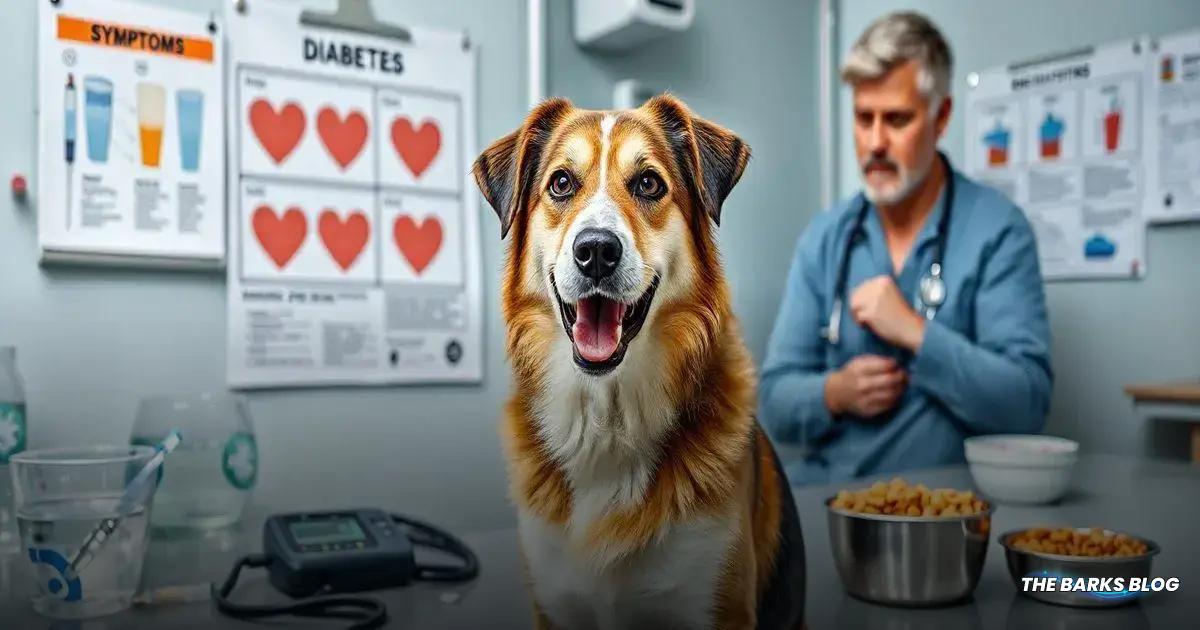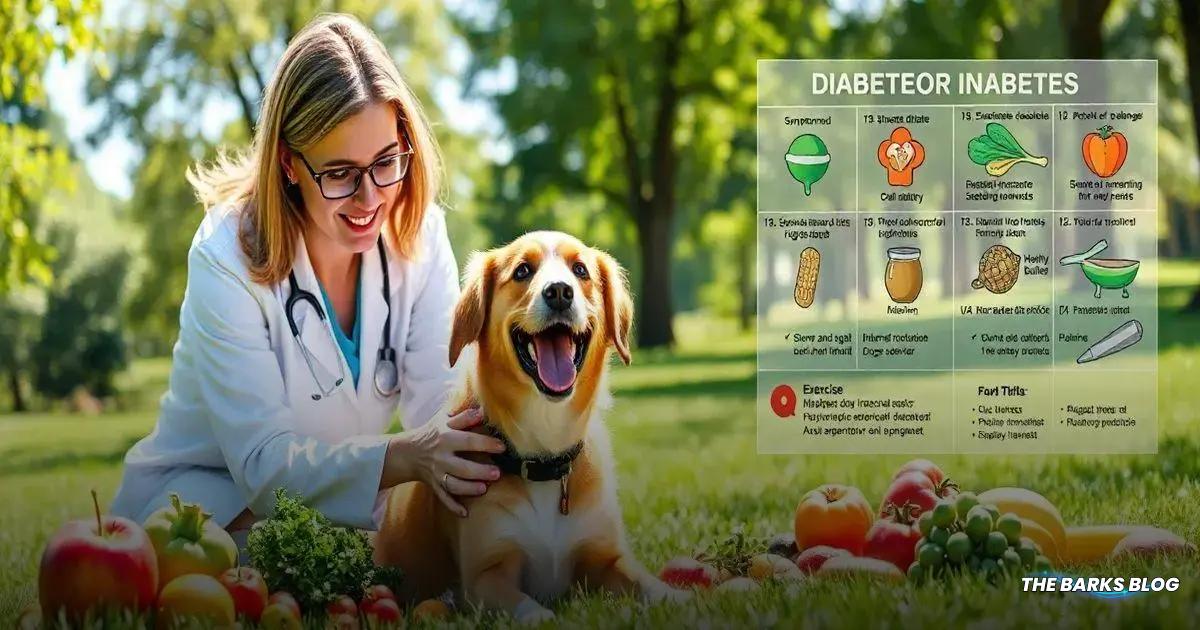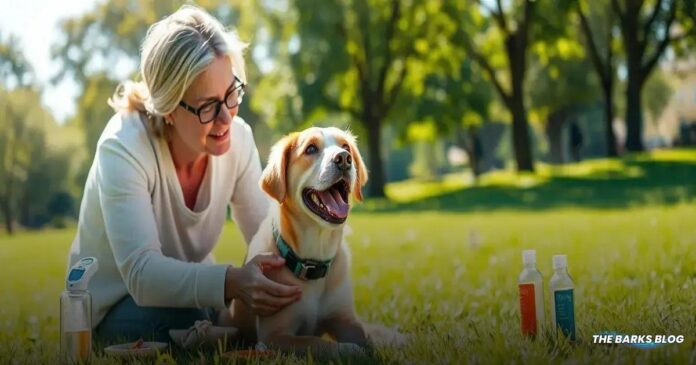Diabetes in dogs is a manageable condition characterized by insufficient insulin production or insulin resistance, leading to symptoms like excessive thirst, frequent urination, increased hunger, weight loss, and lethargy. If left untreated, it can result in diabetic ketoacidosis, a life-threatening condition. Management includes daily insulin injections, dietary adjustments, and regular exercise. While diabetes cannot be cured, proper veterinary care can effectively manage it, and preventive measures such as maintaining a healthy weight and balanced diet can help reduce the risk of developing diabetes.
Diabetes in dogs is a serious health condition that requires careful management. In this article, we will discuss the symptoms of diabetes in dogs, treatment options, and preventive measures you can take to ensure your pup stays healthy.

What is Canine Diabetes?
What is Canine Diabetes?
Diabetes in dogs occurs when the pancreas fails to produce enough insulin (Type 1 Diabetes) or when the body becomes resistant to insulin’s effects (Type 2 Diabetes). Insulin plays a crucial role in allowing the body to absorb sugars from food into the bloodstream, which are then transported to the cells for energy.
When a dog is diabetic, their body struggles to regulate blood sugar levels. High blood sugar can lead to a condition called hyperglycemia, where dogs may exhibit symptoms like increased thirst, frequent urination, and a heightened appetite. If left unchecked, hyperglycemia can cause serious issues, including seizures or even coma.
Conversely, if blood sugar levels drop too low, dogs may experience hypoglycemia, which can be life-threatening. Symptoms of hypoglycemia include confusion, wobbliness, vomiting, and in severe cases, collapse. Immediate action, such as administering a sugary substance like honey or jam, is essential in these situations, followed by contacting a veterinarian.

Symptoms of Diabetes in Dogs
Symptoms of Diabetes in Dogs
Recognizing the symptoms of diabetes in dogs is crucial for timely intervention and management. Here are the common signs to watch for:
- Excessive thirst: Dogs may drink more water than usual, leading to increased urination.
- Weight loss: Despite a good appetite, diabetic dogs often lose weight due to the body’s inability to utilize glucose effectively.
- Increased hunger: Dogs may seem hungrier than normal as their bodies struggle to absorb nutrients.
- Frequent urination/UTIs: The increased urination can lead to urinary tract infections.
- Lethargy: A lack of energy or enthusiasm for play can be a sign of diabetes.
If these symptoms are left untreated or poorly managed, a dog may develop a serious condition known as diabetic ketoacidosis (DKA). Symptoms of DKA include:
- Very low energy: Dogs may appear extremely tired or unresponsive.
- Vomiting: Frequent vomiting can occur as the body struggles to cope with high blood sugar levels.
- Diarrhea: Digestive issues may arise due to the imbalance in blood sugar.
- Sweet-smelling breath: A distinct sweet odor may be noticeable in their breath.
- Lack of appetite/Refusal to eat: Dogs may lose interest in food.
- Lack of balance/Wobbling: Coordination may be affected, leading to stumbling or wobbling.
- Collapsing: In severe cases, dogs may collapse and require immediate veterinary attention.
If you observe any signs of DKA, especially if your dog has just been diagnosed with diabetes, it is critical to seek veterinary care immediately.
If you suspect your dog may have diabetes due to these symptoms, schedule an appointment with your veterinarian. They may request a urine sample to confirm the diagnosis, as diabetes can be verified through urine tests and blood work.

Treatment Options for Diabetic Dogs
Treatment Options for Diabetic Dogs
While diabetes in dogs cannot be cured, it can be effectively managed with a combination of treatment options. Here’s what you can expect:
Once your dog is diagnosed with diabetes, your veterinarian will outline a treatment plan tailored to your dog’s specific needs. This may involve:
- Insulin injections: Most diabetic dogs require daily insulin injections to help regulate their blood sugar levels. These injections are typically administered twice a day, within an hour of meal times. Your vet will teach you how to give the injections, which may seem intimidating at first, but with practice, it becomes routine.
- Diet management: A well-balanced, high-fiber diet is essential for diabetic dogs. Your veterinarian will guide you on appropriate food choices and feeding schedules to help maintain stable blood sugar levels. It’s important to avoid giving your dog human food scraps and limit treats.
- Regular exercise: Consistent exercise is key in managing diabetes as it helps regulate blood sugar levels. Your vet will recommend a set exercise routine that should be followed consistently to avoid sudden spikes or drops in blood sugar.
- Monitoring: Keeping track of your dog’s blood glucose levels is crucial. You may need to monitor their levels at home using a glucometer, and regular vet visits will be necessary to adjust insulin dosages and assess overall health.
Additionally, if your dog is female, spaying may be recommended to help regulate hormonal fluctuations that can affect diabetes management.
It’s important to maintain open communication with your veterinarian throughout the treatment process. If you have questions or concerns about your dog’s insulin injections, dietary changes, or any other aspect of their care, don’t hesitate to reach out for guidance.
With proper treatment and care, diabetic dogs can lead happy, healthy lives. Regular check-ups and a commitment to managing their condition can significantly improve their quality of life.

Preventing Diabetes in Dogs
Preventing Diabetes in Dogs
While not all cases of diabetes in dogs can be prevented, there are several proactive steps you can take to reduce the risk of your dog developing this condition. Here are some effective prevention strategies:
- Maintain a healthy weight: Obesity is a significant risk factor for diabetes in dogs. Ensure your dog maintains a healthy weight through a balanced diet and regular exercise. Consult your veterinarian for guidance on appropriate portion sizes and feeding schedules.
- Provide a balanced diet: Feeding your dog high-quality, nutritious food is essential. A diet rich in fiber and low in simple sugars can help regulate blood sugar levels and prevent obesity.
- Regular exercise: Physical activity is crucial for maintaining a healthy weight and overall well-being. Aim for daily walks and playtime to keep your dog active and engaged.
- Spay or neuter: If you do not plan to breed your female dog, spaying is advisable. Hormonal changes during heat cycles can increase the risk of diabetes, making it more challenging to manage blood sugar levels.
- Routine veterinary check-ups: Regular visits to the veterinarian can help catch early signs of health issues, including diabetes. Your vet can monitor your dog’s weight, diet, and overall health, providing recommendations tailored to their needs.
By implementing these preventive measures, you can help ensure your dog stays healthy and reduces the risk of developing diabetes. Remember, a proactive approach to your dog’s health can lead to a longer, happier life together.
Conclusion
Managing diabetes in dogs may seem daunting, but with the right knowledge and support, it is entirely possible for your furry friend to lead a happy and fulfilling life.
By recognizing the symptoms early, working closely with your veterinarian, and following a consistent treatment plan that includes insulin administration, dietary management, and regular exercise, you can help keep your dog’s blood sugar levels stable.
Moreover, taking proactive steps to prevent diabetes through proper weight management, a balanced diet, and routine veterinary care can significantly reduce the risk of this condition.
Remember, your commitment to your dog’s health and well-being is vital in ensuring they live a long, vibrant life.
With love, care, and attention, you can successfully navigate the challenges of canine diabetes and enjoy many happy moments with your beloved pet.
FAQ – Frequently Asked Questions about Diabetes in Dogs
What are the main symptoms of diabetes in dogs?
Common symptoms of diabetes in dogs include excessive thirst, frequent urination, increased hunger, weight loss, and lethargy.
Can diabetes in dogs be cured?
No, diabetes in dogs cannot be cured, but it can be effectively managed with insulin therapy, a proper diet, and regular exercise.
How is diabetes diagnosed in dogs?
Diabetes is diagnosed through a combination of clinical signs, urine tests, and blood tests to measure blood glucose levels.
What should I feed my diabetic dog?
A high-fiber diet with low simple sugars is recommended for diabetic dogs. Consult your veterinarian for specific food recommendations.
How often do diabetic dogs need insulin injections?
Most diabetic dogs require insulin injections twice a day, administered within an hour of their meals.
Can I prevent diabetes in my dog?
While not all cases can be prevented, maintaining a healthy weight, providing a balanced diet, and ensuring regular exercise can significantly reduce the risk of diabetes.




